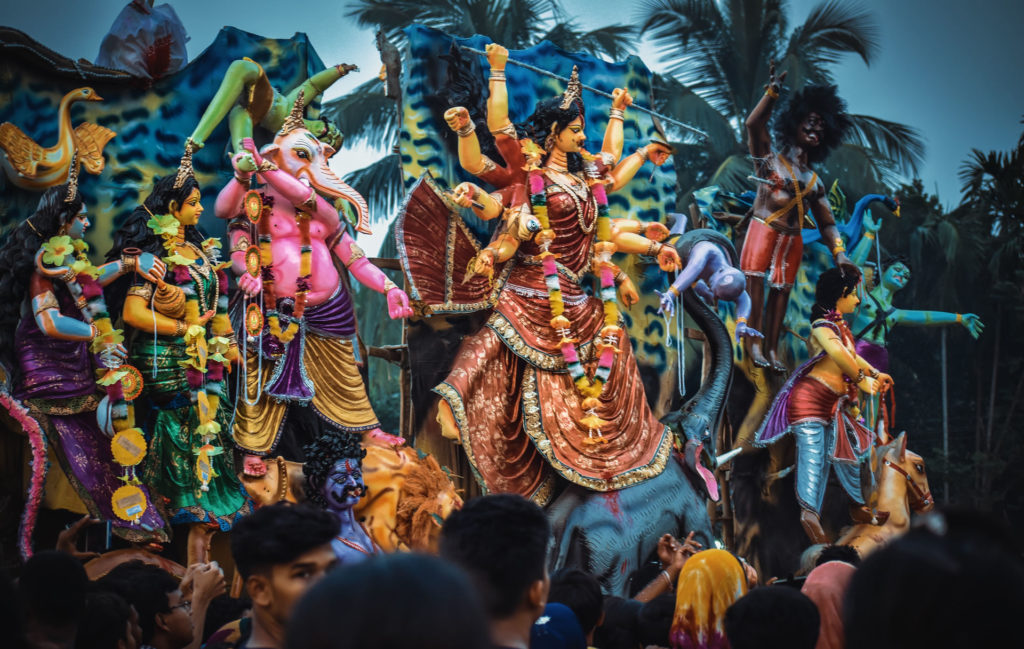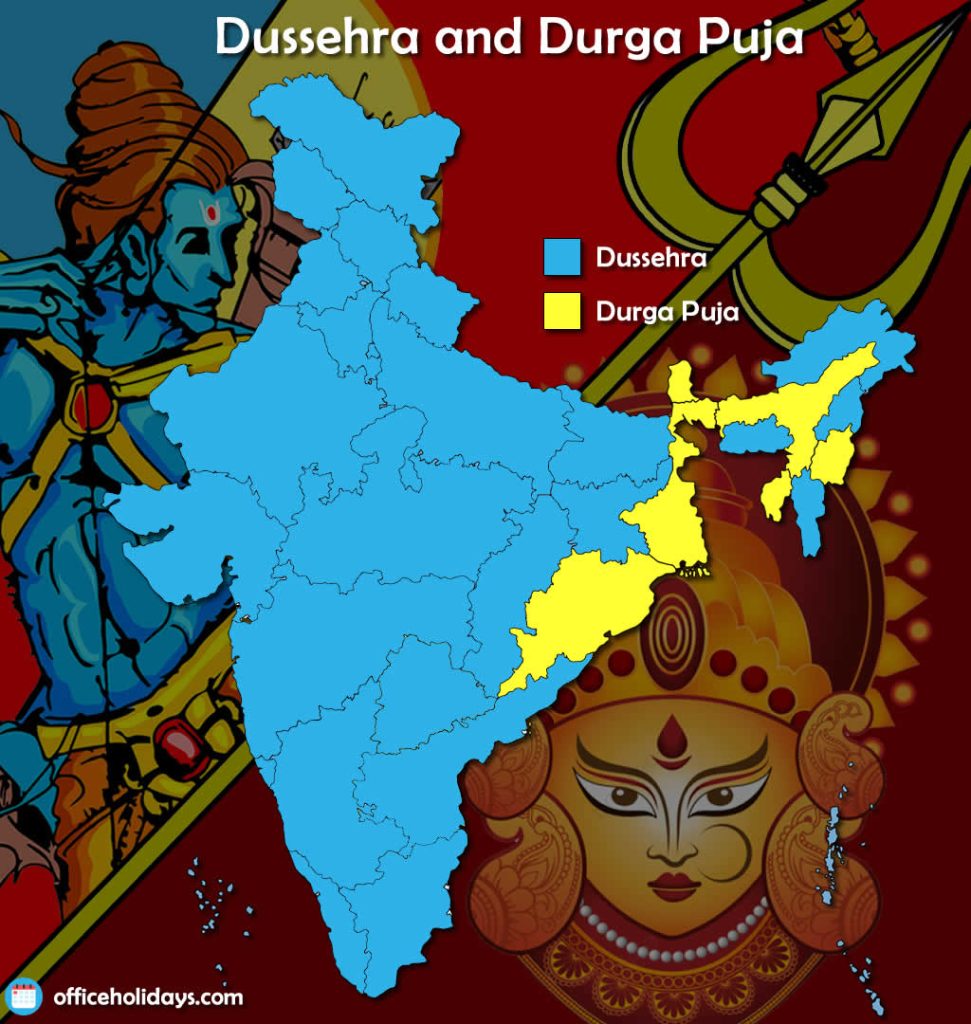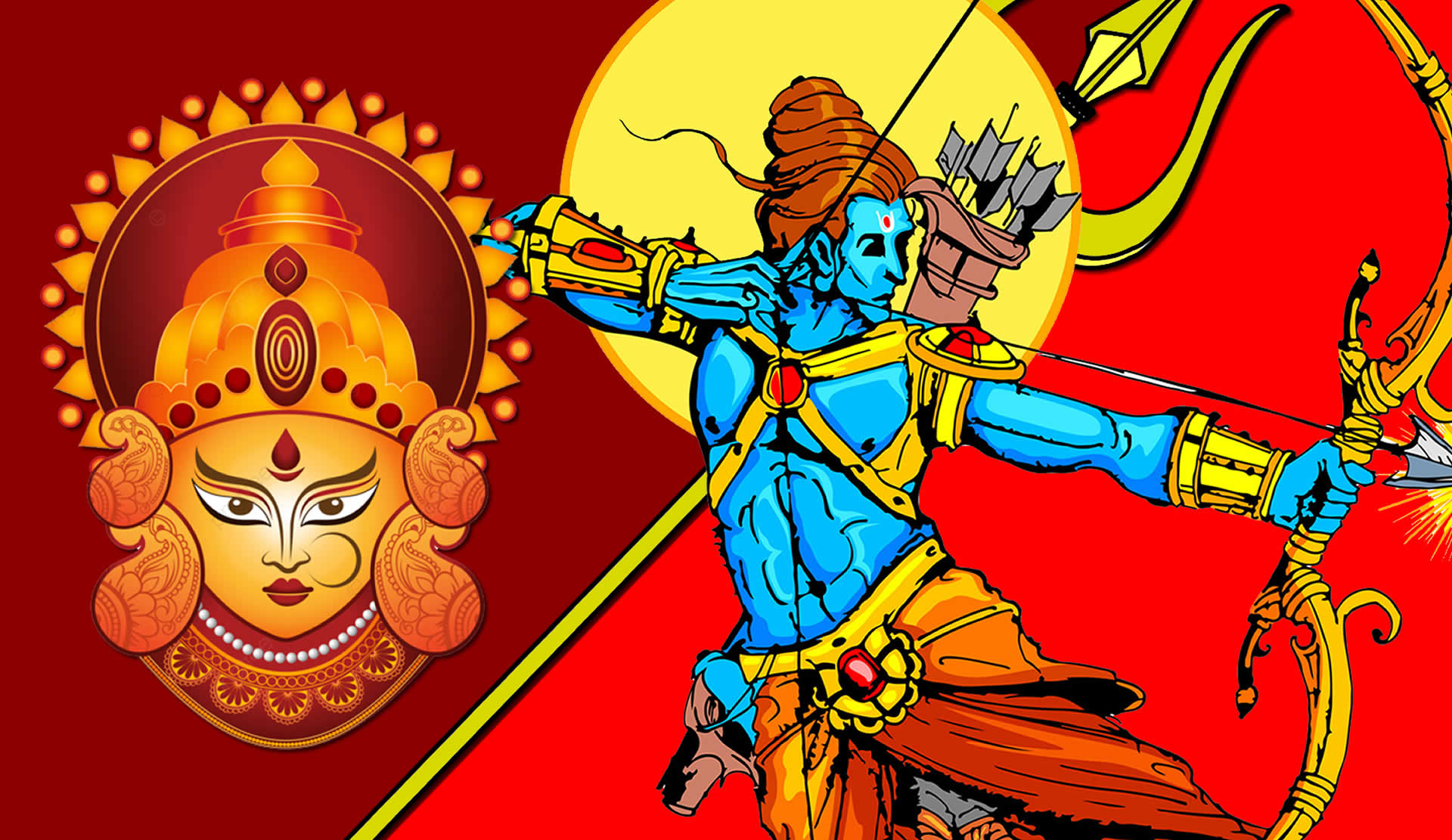India is often called the ‘land of festivals and fairs’ where each day brings some kind of celebration and there are more festivals celebrated in India than anywhere else in the world.
Some festivals, such as Holi or Diwali transcend their rural roots and are famous across the world.
On the tenth day of the Hindu month of Asvina, two major Hindu festivals take place that are less-known outside the sub-continent, but still bring much gaiety, colour and noise to late September or October. This year the festivals take place on Tuesday October 24th.
Both festivals recount epic battles and victory of good over evil from Hindu Mythology.
Dussehra

Dussehra or Vijaya Dashami is celebrated as the tenth day of Navratri. It is one of the most noteworthy Indian festivals and is celebrated all over India as the end of Navratri.
The festival traditionally represents the legend of Rama and Ravana. Ravana, the ten-headed demon king, abducted the beloved Princess of India, Sita. The Lord Rama rescued the Princess, proving victorious over the powerful and evil King Ravana.
This story is recounted in the Ramayana, an ancient Sanskrit epic. It is traditionally attributed to the authorship of the sage Valmiki and dated to around 500 BCE to 100 BCE.
The Ramayana tells how Ram won the hand of the princess Sita, but was exiled with her and his brother Laksmana for 14 years through the plotting of his stepmother. In the forest, Sita was abducted by Ravana, and Ram gathered an army of monkeys and bears to search for her.
The allies attacked Lanka, killed Ravana, and rescued Sita. Ram needed the help of the monkeys and bears as Ravana could not be killed by gods, demons or spirits.
In the northern part of India ‘Ramleela’ is observed by enacting plays from the heroic life of Lord Rama, recitations are held and music are also being played.
On the day of Dussehra, large statues of Ravana are constructed and brought into open fields. These effigies are burned and with them the evil they represent, so that the people are allowed to follow the path of virtue and goodness throughout the year.
It is a public holiday in the following states: Bihar, Arunachal Pradesh, Delhi, Chhattisgarh, Chandigarh, Goa, Gujarat, Haryana, Himachal Pradesh, Jharkhand, Karnataka, Kerala, Madhya Pradesh, Maharashtra, Meghalaya, Mizoram, Nagaland, Tamil Nadu, Uttar Pradesh, Uttarakhand, Punjab, Andaman and Nicobar Islands, Lakshadweep, Jammu and Kashmir, Ladakh, Rajasthan, Telangana, and Andhra Pradesh.
Durga Puja

While most of India celebrates Dusshera, in some eastern and north-eastern states, another festival harks back to an older battle of good versus evil.
Durga Puja is a celebration of the Mother Goddess, and the victory of the revered warrior Goddess Durga over the evil buffalo demon Mahishasura.
The world was under threat from the evil buffalo demon Mahishasura, that no man or god could defeat. To vanquish the demon, Durga emerged from the collective energies of all the gods. Each of her ten arms brandished the deadliest weapon of each god. Durga was the mother to four gods, Kartikeya, Ganesha, Saraswati, and Lakshmi.
To Hindus, Durga represents the embodiment of shakti, the powerful feminine force that governs all cosmic creation, existence, and change.
Before his battle with Ravana, Lord Rama invoked the goddess and her victory over the buffalo-demon, which ties the festivals of Durga Puja and Dussehra closely together.
Indeed, there is a tradition that it was Lord Rama, who first worshipped the slayer of the buffalo-demon, by offering 108 blue lotuses and lighting 108 lamps, at this time of the year.
During the festival, pandals, huge temporary canopies – held by a framework of bamboo poles and draped with colorful fabric – house the icons of Durga. Modern pandals are innovative, artistic and decorative at the same time, offering a visual spectacle for the numerous visitors who go ‘pandal-hopping’ during the four days of Durga Puja.
In December 2021, UNESCO added Durga Puja to its “Intangible Cultural Heritage of Humanity” list. Prime Minister Modi, reacting to the development called it “A matter of great pride and joy for every Indian.” Durga Puja is the first festival in Asia to receive the UNESCO heritage tag.
It is a public holiday in the following states: West Bengal, Assam, Odisha, Sikkim, Tripura, and Manipur.
Which Indian States observe Dussehra and which observe Duja Puja?

A precursor to Diwali
The festivals of Dussehra and Vijayadashami also mark the start of preparations for Diwali, which is celebrated 20 days later. A notable feature of Diwali is the lighting of diya (oil lamps). this is done to guide Ram and Sita back from their exile, on the darkest night of the year (the new moon in the month of Kathik).



